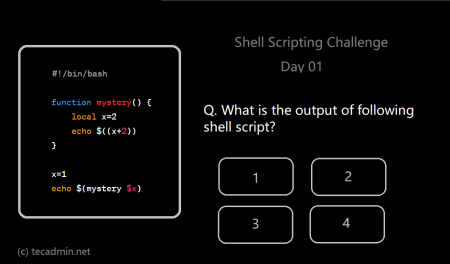Looping through a range of numbers is a common task in scripting and programming. In this article, we will explore various methods to loop through a range of numbers using Bash, a powerful scripting language for Unix-based systems. Mastering these techniques will help you automate tasks, process data, and perform complex operations with ease and efficiency.
Table of Contents
- Introduction to Bash
- Using the for Loop with a Range of Numbers
- Looping with the seq Command
- Looping with the for ((…)) Arithmetic Expression
- Looping with the while Loop
- Real-World Applications
- Conclusion
1. Introduction to Bash
Bash (short for Bourne Again SHell) is a Unix shell and command-line interpreter. It is the default shell for many Linux distributions and macOS, providing a powerful scripting language for automating tasks, managing files and directories, and performing various system operations.
2. Using the for Loop with a Range of Numbers
The for loop is one of the most commonly used loops in Bash scripting. To loop through a range of numbers using the for loop, you can use the following syntax:
1 2 3 | for i in {start..end}; do # Commands to be executed done |
For example, to loop through numbers 1 to 10 and print them, you can use the following script:
1 2 3 | for i in {1..10}; do echo "Number: $i" done |
3. Looping with the seq Command
The seq command is another useful tool for generating sequences of numbers. To use the seq command with a for loop, use the following syntax:
1 2 3 | for i in $(seq start end); do # Commands to be executed done |
For example, to loop through numbers 1 to 10 and print them, you can use the following script:
1 2 3 | for i in $(seq 1 10); do echo "Number: $i" done |
4. Looping with the for ((…)) Arithmetic Expression
The for ((...)) loop is an alternative method for looping through a range of numbers using arithmetic expressions. To use the for ((...)) loop, use the following syntax:
1 2 3 | for ((i=start; i<=end; i++)); do # Commands to be executed done |
For example, to loop through numbers 1 to 10 and print them, you can use the following script:
1 2 3 | for ((i=1; i<=10; i++)); do echo "Number: $i" done |
5. Looping with the while Loop
The while loop is another control structure that can be used to loop through a range of numbers. To use the while loop, use the following syntax:
1 2 3 4 5 | i=start while [ $i -le end ]; do # Commands to be executed i=$((i+1)) done |
For example, to loop through numbers 1 to 10 and print them, you can use the following script:
1 2 3 4 5 | i=1 while [ $i -le 10 ]; do echo "Number: $i" i=$((i+1)) done |
6. Real-World Applications
Looping through a range of numbers in Bash scripts can be useful in various scenarios, such as:
- Automating repetitive tasks and batch processing.
- Performing calculations and data manipulation.
- Generating reports and exporting data at specific intervals.
- Managing log files and system maintenance tasks.
- Monitoring system performance and resource usage.
By mastering these looping techniques, you can enhance your automation capabilities, streamline your workflows, and perform complex operations with ease.
Conclusion
In this article, we have covered various methods to loop through a range of numbers using Bash scripting, including the for loop, seq command, for ((…)) arithmetic expression, and the while loop. We have demonstrated how to implement these techniques with examples and discussed their real-world applications.
By understanding and applying these looping methods, you can take advantage of Bash’s full potential, simplify your tasks, and improve the efficiency of your Unix-based system operations. Whether you’re a system administrator, programmer, or power user, mastering these techniques will help you harness the power of Bash and elevate your scripting skills to new heights.



